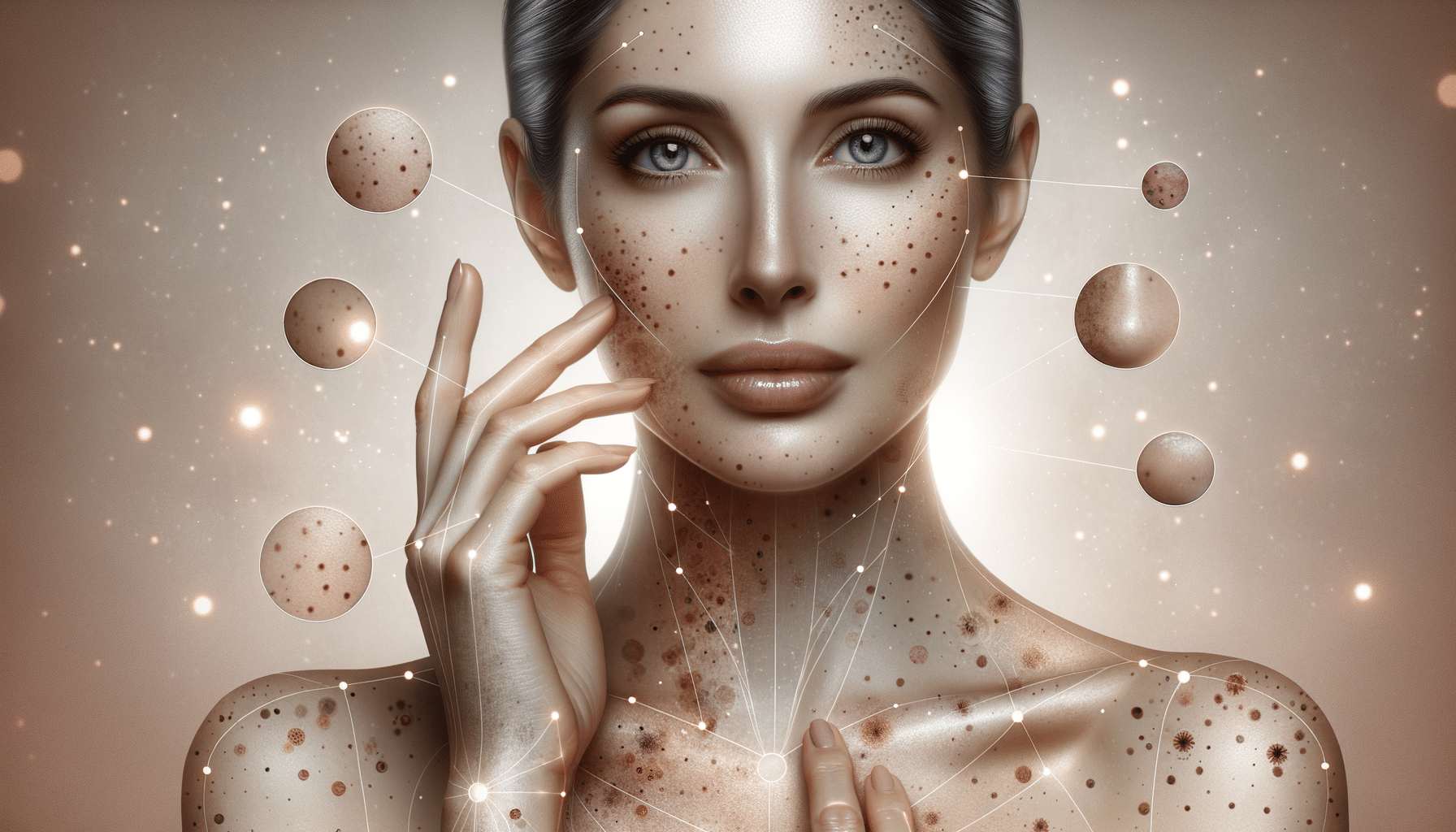
Promising Solutions for Reducing Facial Age Spots
Understanding Facial Age Spots
Facial age spots, often referred to as liver spots or solar lentigines, are flat, brown, gray, or black spots that usually appear on sun-exposed areas of the skin. They are primarily caused by prolonged exposure to ultraviolet (UV) light, either from the sun or tanning beds. As we age, our skin’s ability to regenerate and protect itself diminishes, making it more susceptible to these blemishes.
These spots are harmless and do not require treatment unless for cosmetic reasons. However, their presence can be distressing for many, as they are often associated with aging. Understanding the nature of facial age spots is crucial in determining the appropriate treatment or prevention methods. They are more common in individuals over 50, but younger people can also develop them, especially if they spend a lot of time in the sun without adequate protection.
In terms of their appearance, age spots vary in size and usually appear on areas most exposed to the sun, such as the face, hands, shoulders, and arms. The color intensity can range from light brown to black, depending on the individual’s skin tone and the amount of sun exposure.
Prevention Strategies for Facial Age Spots
Prevention is a key strategy in managing facial age spots. Since these spots are primarily caused by sun exposure, reducing UV exposure is essential. Here are some preventive measures to consider:
- Regular use of sunscreen with a high SPF rating can significantly decrease the risk of developing age spots. Apply it generously on all exposed skin, even on cloudy days.
- Wearing protective clothing, such as wide-brimmed hats and long sleeves, can provide additional protection against harmful UV rays.
- Seeking shade during peak sun hours (10 a.m. to 4 p.m.) can also help minimize exposure.
- Avoiding tanning beds, which emit UV radiation, can prevent premature skin aging and the formation of age spots.
Incorporating these habits into your daily routine can not only prevent age spots but also contribute to overall skin health. It’s important to note that while prevention can reduce the risk, it may not completely eliminate the possibility of developing age spots, especially in those with a genetic predisposition.
Topical Treatments for Facial Age Spots
For those who already have facial age spots, various topical treatments can help lighten or reduce their appearance. These treatments often contain ingredients that inhibit melanin production or promote skin cell turnover. Some commonly used ingredients include:
- Hydroquinone: A skin-lightening agent that can reduce the appearance of age spots over time.
- Retinoids: These vitamin A derivatives accelerate cell turnover and can improve skin texture and tone.
- Vitamin C: Known for its antioxidant properties, vitamin C can brighten the skin and reduce pigmentation.
- Alpha Hydroxy Acids (AHAs): These exfoliants help remove dead skin cells, revealing fresher skin underneath.
It is important to use these treatments under the guidance of a dermatologist, as some can cause skin irritation or increase sensitivity to sunlight. Consistent use, along with sun protection, can yield noticeable improvements over time.
Professional Procedures for Age Spot Reduction
For individuals seeking more immediate results, professional dermatological procedures can offer effective solutions for reducing facial age spots. These procedures are typically performed by licensed professionals and include:
- Laser Therapy: This involves using targeted laser beams to break down melanin in the skin, reducing the appearance of age spots.
- Chemical Peels: A chemical solution is applied to the skin, which exfoliates the top layers and promotes new skin growth.
- Microdermabrasion: A minimally invasive procedure that sands away the outer layer of skin, improving texture and tone.
- Cryotherapy: This involves freezing the age spots with liquid nitrogen, causing them to fade as the skin heals.
These treatments vary in terms of cost, recovery time, and effectiveness. Consulting with a dermatologist can help determine the most suitable option based on individual skin type and condition.
Natural Remedies and Lifestyle Adjustments
In addition to medical treatments, several natural remedies and lifestyle adjustments can support the reduction of facial age spots. While these methods may not provide immediate results, they can be beneficial as part of a holistic approach to skin care:
- Lemon Juice: The natural bleaching properties of lemon juice can help lighten age spots. Apply it directly to the spots and leave it on for a few minutes before rinsing.
- Aloe Vera: Known for its healing properties, aloe vera can soothe the skin and may help reduce pigmentation over time.
- Green Tea Extracts: Rich in antioxidants, green tea can protect the skin from further damage and support its natural healing processes.
- Maintaining a healthy diet rich in antioxidants and vitamins can improve skin health and resilience.
While natural remedies can be gentle on the skin, they should be used with caution, especially for those with sensitive skin. Patch testing and consulting with a skincare professional can help ensure safety and effectiveness.


